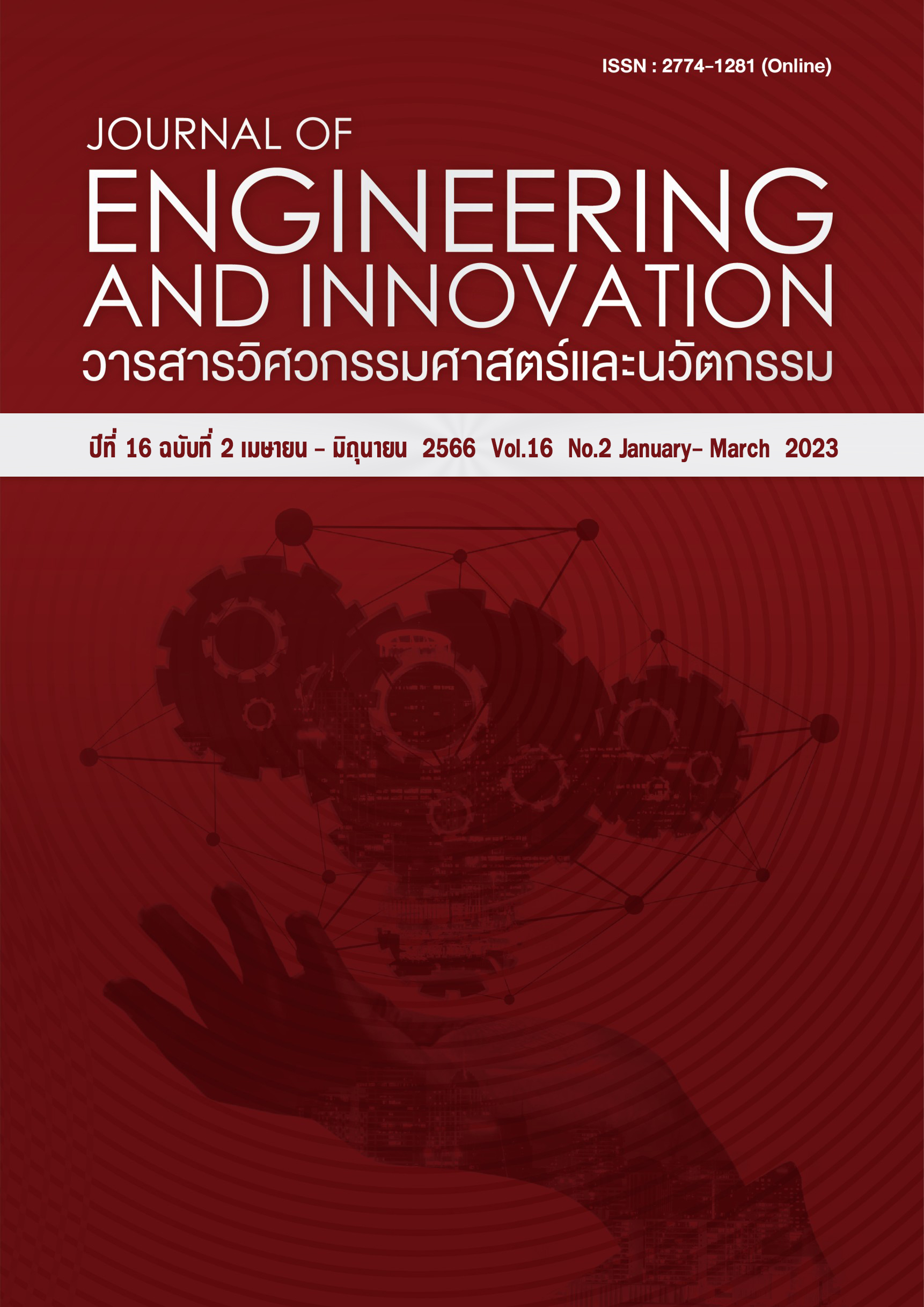Time series forecasting for production planning in bottled water industry
Main Article Content
Abstract
This research aim to determine the appropriate forecasting method for sales of 0.33, 0.6 and 1.5 liter bottled water to reduce discrepancies amount in production planning of bottled water industry, we have studied analyzing undulation of time series and created the forecasting equation with amount of 120 months since January 2008 to December 2017 to find an appropriate forecasting model and apply the latter to forecast for the bottled water sales with amount three sizes within 36 months since January 2018 to December 2020. Those empirical data are compared with the forecasting model. According to the research results, at the statistical level of 0.05, the time series of bottled water sales of three sizes have a tendency but have no seasonal influence. There are three methods to be compared in the study: double exponential smoothing method, linear trend line method, and Box-Jenkins method. Comparison of forecasting values employs the criteria of Mean Absolute Error (MAE), Mean Absolute Percentage Error (MAPE) and the lowest Root Mean Square Error (RMSE). The suitable forecasting method of bottled water size 0.33 liter is Box-Jenkins method ARIMA (1,1,1) while, the appropriate forecasting method of the bottled water size 0.6 liter is double exponential smoothing method. Last, the suitable forecasting method of the bottled water size 1.5 liter is linear trend line method. All methods result in Mean Absolute Error of the production plan of three-size bottled water during 2018 to 2020 reducing to 1.35, 4.95, and 1.13 respectively (unit: a million bottles) significantly at the confidential level of 95 percent.
Article Details
References
River Plus. แนวโน้มอุตสาหกรรมเครื่องดื่มของไทย ปี 2019-2021. Available from: https://riverplus. com/beverage-industry-2019-2021/ [Accessed 2020 Jun 15].
ชมพูนุท เกษมเศรษฐ์. การพยากรณ์. ใน: ทฤษฎีการจัดการพัสดุคงคลังและการประยุกต์ใช้สำหรับตัวแบบพัสดุคงคลังดีเทอมินิสติคแบบต่อเนื่อง. เชียงใหม่: มหาวิทยาลัย เชียงใหม่. 2559; 31-35.
วิทยา สุหฤทดำรง. การพยากรณ์อุปสงค์ในโซ่อุปทาน. ใน: การจัดการโซ่อุปทาน. พิมพ์ครั้งที่ 2. กรุงเทพ: เพียร์สัน เอ็ดดูเคชั่น อินโดไชน่า. 2546; 72.
จุฑามาศ ศุภนคร. การพยากรณ์อนุกรมเวลาสำหรับการวางแผนการผลิตชิ้นส่วนประกอบผลิตภัณฑ์แบริ่ง. วารสารวิชาการพระจอมเกล้าพระนครเหนือ มหาวิทยาลัยเทคโนโลยีพระจอมเกล้าพระนครเหนือ. 2554; 21(3): 595-606.
Jeffrey Jarrett. Business Forecasting Methods, 2nd ed. Oxford: Basil Blackwell, 1991.
DeLurgio SA. Forecasting Principles and Applications. Boston, Massachusetts: McGraw-Hill, 1998.
มุกดา แม้นมินทร์. อนุกรมเวลาและการพยากรณ์. กรุงเทพฯ: ประกายพรึก. 2549.
ศศิธร โกฎสืบ, กัลยา บุญหล้า. การสร้างตัวแบบเพื่อการพยากรณ์ราคาข้าวหอมมะลิ 105. วารสารวิชาการวิทยาศาสตร์และเทคโนโลยี มหาวิทยาลัยราชภัฏนครสวรรค์. 2559; 8(8): 49–60.
เฉลิมชาติ ธีระวิริยะ. การเปรียบเทียบวิธีการพยากรณ์สำหรับความต้องการใช้พลังงานไฟฟ้าในจังหวัดนครพนมการเปรียบเทียบวิธีการพยากรณ์สำหรับความต้องการใช้พลังงานไฟฟ้าในจังหวัดนครพนม.วารสารวิชาการ วิทยาศาสตร์และเทคโนโลยี มหาวิทยาลัยนเรศวร. 2560; 25(4): 24–37.
Zhao L-T, Wang Y, Guo S-Q, Zeng G-R. A novel method based on numerical fitting for oil price trend forecasting. Appl Energy. 2018; 220:154–163.
Kitworawut P, Rungreunganun V. Corn Price Modeling and Forecasting Using Box-Jenkins Model. Appl Sci Eng Prog. 2019; 12(4): 277–285.
ชม ปานตา และ ยุภาวดี สำราญฤทธิ์. การพยากรณ์ปริมาณน้าฝนรายเดือนในจังหวัดนครสวรรค์โดยใช้เทคนิคการพยากรณ์ทางสถิติ.วารสารวิชาการวิทยาศาสตร์และเทคโนโลยี มหาวิทยาลัยราชภัฏนครสวรรค์. 2560; 9(10): 127-142.
คชินทร์ โกกนุทาภรณ์. การศึกษาเปรียบเทียบตัวแบบที่เหมาะสมสำหรับการพยากรณ์จำนวนผู้ใช้น้ำประปาของการประปาส่วนภูมิภาค สาขาปทุมธานี. วารสารวิทยาศาสตร์และเทคโนโลยี มหาวิทยาลัยธรรมศาสตร์. 2564; 29(1): 36-45.
วรางคณา เรียนสุทธิ์. การเลือกตัวแบบพยากรณ์ราคาไก่รุ่นพันธุ์เนื้อที่เหมาะสม. วารสารวิทยาศาสตร์ มข. มหาวิทยาลัยขนแก่น. 2562; 47(3): 563-575.
วรางคณา เรียนสุทธ์ิ. ตัวแบบพยากรณ์ราคามังคุดคละ.
วารสารวิชาการวิทยาศาสตร์และเทคโนโลยี มหาวิทยาลัยอุบลราชธานี. 2560; 19(2): 31-42.
บุญฤทธิ์ ชูประดิษฐ์, เสาวภา ชัยพิทักษ์. ตัวแบบพยากรณ์ปริมาณการส่งออกมะม่วงของประเทศไทย. วารสารวิชาการวิทยาศาสตร์และเทคโนโลยี มหาวิทยาลัยนเรศวร. 2561; 26(2): 74–85.
Booranawong T, Booranawong A. Double exponential smoothing and Holt-Winters methods with optimal initial values and weighting factors for forecasting lime, Thai chili and lemongrass prices in Thailand. Eng Appl Sci Res. 2018; 45(1):32–38.
Abdallah FD. Role of Time Series Analysis in Forecasting Egg Production Depending on ARIMA Model. Applied Mathematics. 2019, 9(1): 1-5.
Didi EI, Kingdom N. and Harrison EE. ARIMA Modelling and Forecasting of COVID-19 Daily Confirmed/Death Cases: A Case Study of Nigeria. Probability and Statistics. 2021, 12(3): 59-80.
Fatma Pakdil. Box-and-Whisker-Plot. In: Six Sigma for Students. Cham, Switzerland: Springer; 2020. p. 321. Available from: https://doi.org/ 10. 1007/ 978-3-030-40709-4 [Accessed 2021 Feb 12]
Weisburd D, Britt C. The normal distribution and its application to tests of statistical significance. In: statistics in criminal justice. Boston, MA: USA; 2014. p. 234–268.
Guerard JB, Schwartz E. Regression Analysis and Forecasting Models. In: Quantitative Corporate Finance. Boston, MA: Springer; 2007. p. 277-278. Available from: https://doi.org/10.1007/978-0-387-34465-2_12 [Accessed 2020 Feb 25]

